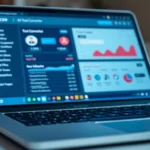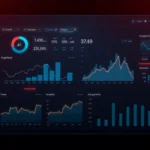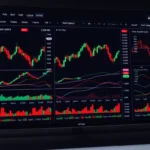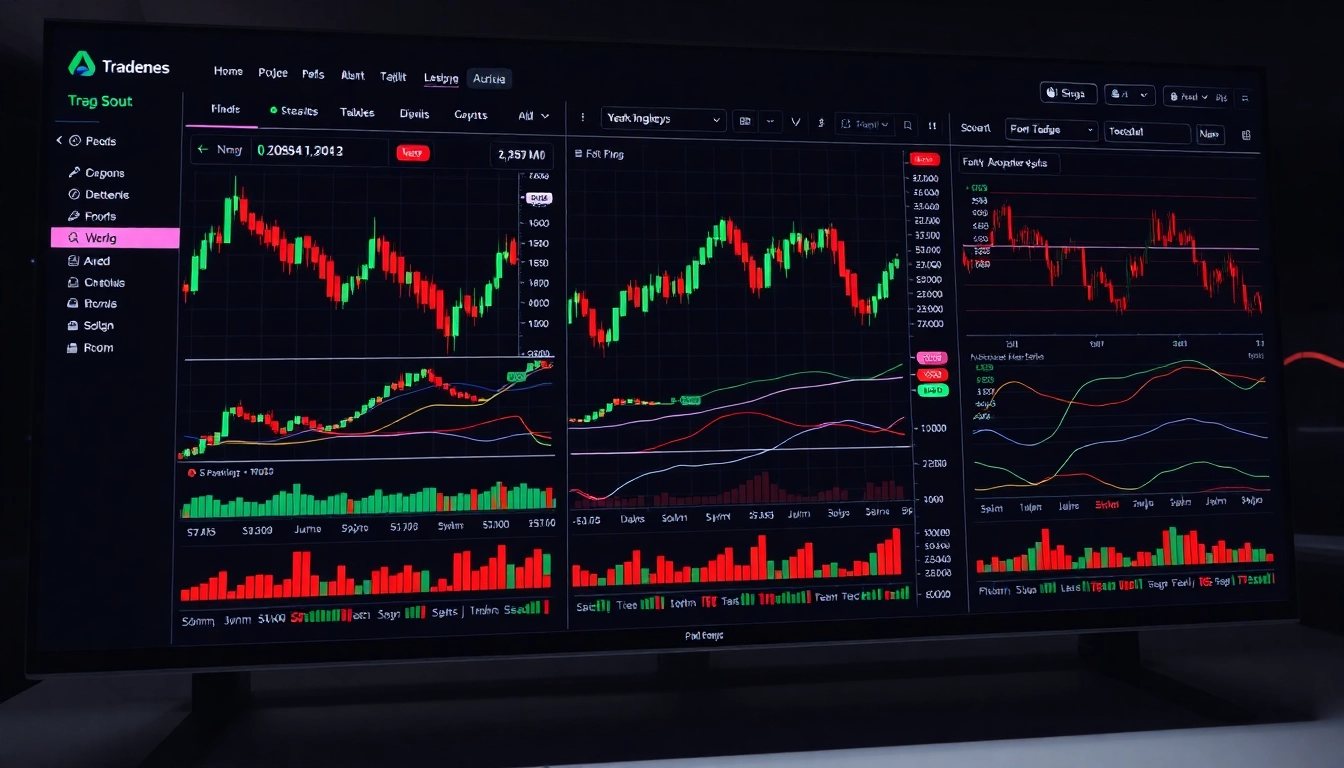Introduction to Trading View and Its Core Features
In the rapidly evolving landscape of financial trading and analysis, having a reliable and comprehensive platform is essential. trading view has established itself as a leading solution, combining advanced charting tools, social networking capabilities, and real-time data access into one cohesive platform. Whether you’re a novice aiming to understand market movements or an experienced trader executing complex strategies, TradingView offers an unrivaled suite of features to elevate your trading experience.
Overview of Trading View as a Trading and Analysis Platform
TradingView is more than just a charting tool; it is a social hub for traders and investors globally. Its core strength lies in its user-friendly interface, customizable charts, and vast data coverage across multiple asset classes such as stocks, cryptocurrencies, commodities, forex, and futures. It serves as a window into the markets, providing real-time prices, historical data, and technical analysis tools that cater to both short-term traders and long-term investors.
Key Tools and Features That Drive Successful Trading
- Advanced Charting: TradingView’s interactive charts allow users to analyze trends with over 100 indicators, drawing tools, and pattern recognition features that facilitate in-depth technical analysis.
- Customizable Layouts: Traders can tailor their workspace by creating multiple layouts, saving personalized indicators, and setting up specific timeframes to suit different trading styles.
- Alerts and Notifications: Automated alerts notify traders of significant market movements, breaking news, or specific technical conditions, enabling timely decision-making.
- Social Network Integration: The platform’s social features include idea sharing, commenting, and community discussions, fostering collective insights and collaborative trading.
- Data Connectivity: TradingView connects to numerous brokerage accounts, allowing for seamless trading execution directly from charts, thereby eliminating delays and enhancing strategic agility.
How Trading View Caters to Both Beginners and Experts
Designed with inclusivity in mind, TradingView offers a range of functionalities suitable for all levels of traders. Beginners benefit from its educational resources, preset indicators, and straightforward interface. Experts, on the other hand, leverage advanced scripting capabilities through Pine Script, backtesting tools, and comprehensive multi-market analysis. The platform’s community-driven environment provides continuous learning opportunities, making it a versatile choice for a diverse trading community.
Effective Ways to Use Trading View for Market Analysis
Setting Up Custom Charts and Indicators
Maximizing TradingView’s potential starts with personalized chart setups. Users can choose from various chart types such as candlestick, line, bar, or Heikin Ashi, based on their analysis preferences. Custom indicators—either built-in or created via Pine Script—allow traders to visualize specific market signals. For example, combining moving averages with volume indicators can help identify trend confirmations. Setting up multiple charts side-by-side enables a multifaceted analysis of assets, industries, or correlated markets, enhancing strategic insights.
Utilizing Social Trading and Community Ideas
TradingView’s social features are invaluable for gaining insights and validating strategies. Users can browse and follow ideas shared by top traders, engage in discussions, and learn from community annotations. This crowdsourced intelligence helps traders uncover emerging trends, spot potential reversals, or validate their own analysis. Keeping an eye on trending ideas and expert comments can inform decisions and foster a culture of continuous learning and adaptation.
Integrating Alerts and Automated Trading Strategies
TradingView’s alert system is a critical tool for timely trade execution. Users can set price alerts, indicator thresholds, or news notifications that trigger automated responses, reducing reaction times. For algorithmic traders, TradingView supports Pine Script for developing custom strategies that can be backtested on historical data. Once validated, these strategies can be integrated with brokerage APIs for automated trading, enabling a disciplined, data-driven approach that minimizes emotional trading biases.
Optimizing Trading View for Different Asset Classes
Tracking Stocks, Cryptocurrencies, and Commodities
TradingView provides extensive data and charting capabilities for a wide array of assets. Stock traders can track indices like the S&P 500 or individual securities, utilizing fundamental overlays and technical patterns. Cryptocurrency enthusiasts benefit from real-time data on major coins like Bitcoin and Ethereum, along with new altcoins. Commodities, including gold, oil, and agricultural products, are also well-represented, allowing traders to analyze global supply-demand trends and seasonal patterns.
Adapting Tools for Forex and Futures Trading
Forex traders use TradingView’s powerful tools to analyze currency pairs through multiple timeframes and overlays like Fibonacci retracements or MACD divergences. Futures traders benefit from continuous contracts and high-leverage analysis. Custom watchlists, real-time price alerts, and historical comparisons enhance trading precision in these volatile markets. The platform also supports spread and arbitrage strategies, essential for experienced derivatives traders.
Building Multi-Asset Watchlists for Diversified Trading
A key to successful diversification is monitoring multiple markets simultaneously. TradingView allows users to create dynamic watchlists with real-time updates across asset classes, enabling quick comparisons and portfolio rebalancing. Color-coded indicators and customizable columns help identify correlations or divergences, supporting complex multi-asset strategies in an integrated environment.
Practical Tips to Enhance Trading View Usage
Best Practices for Chart Customization and Layout
Effective chart customization involves setting up clear, clutter-free layouts tailored to your trading style. Use color schemes that reduce eye strain, organize indicators logically, and utilize split-screen views for comparative analysis. Remember to save multiple templates and layouts for quick access during different trading sessions. Regularly reviewing your setup ensures it evolves with your strategies and market conditions.
Leveraging Community Insights for Better Decisions
Engaging actively with the TradingView community can unlock market intelligence that’s otherwise difficult to access. Follow traders whose analysis aligns with your interests, comment with questions, and contribute your own ideas. Analyzing the performance of shared ideas over time helps assess their reliability, building a personalized “expert network” that informs your trading decisions.
Monitoring Performance and Refining Strategies
Tracking your trading performance on TradingView involves analyzing backtested results, ongoing alerts, and real trade outcomes. Use the platform’s built-in metrics to evaluate profitability, drawdowns, and win rates. Refine your strategies iteratively, incorporating new indicators or adjusting parameters based on historical performance reviews. Consistent performance monitoring fosters disciplined improvements and risk management.
Advanced Strategies and Performance Metrics on Trading View
Backtesting and Strategy Development
Backtesting is a cornerstone of disciplined trading. TradingView’s strategy tester allows users to implement custom algorithms via Pine Script, simulate their performance across historical data, and visualize the results. This process helps identify optimal parameters, avoid overfitting, and validate strategies before live deployment. Advanced users can combine multiple indicators and conditions to develop robust automated systems aligned with their risk appetite.
Analyzing Trading Performance with Built-In Metrics
After executing strategies, traders can analyze key performance metrics such as profit factor, Sharpe ratio, maximum drawdown, and expectancy. These insights highlight strengths and weaknesses, guiding strategic adjustments. Combining quantitative analysis with qualitative review enhances decision-making and instills confidence in your trading system.
Scaling Your Trading with Data-Driven Decisions
Efficient scaling involves incremental position sizing based on model performance, diversification across correlated assets, and continuous monitoring of real-time data streams. TradingView’s data-rich environment supports these processes by providing up-to-date market conditions, enabling traders to adapt swiftly and optimize risk-adjusted returns.









